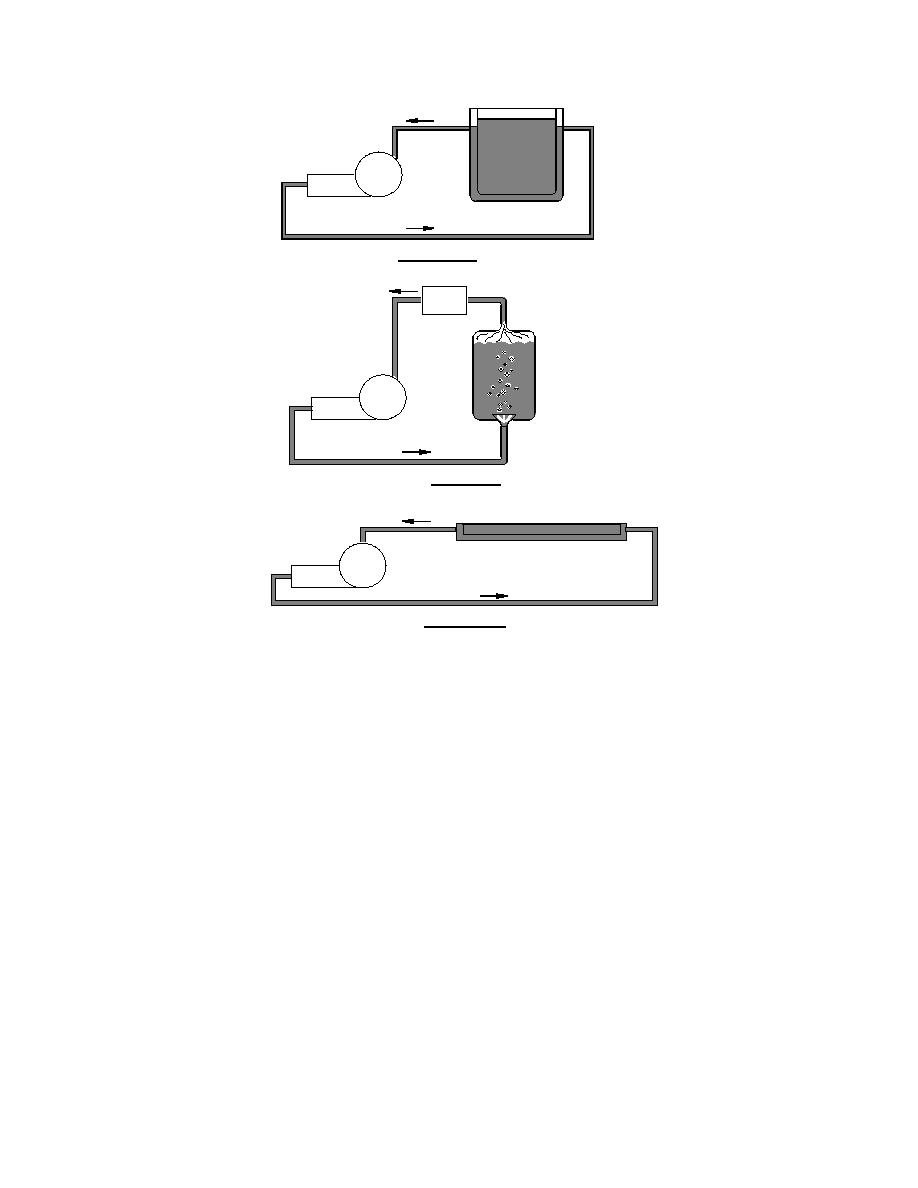
Sludge
Refrigerator
a. Bulk Freezer
Gas
Liquid
Gaseous Refrigerant
Sludge
(bubbles)
Refrigerator
b. Crystallizer
Sludge
Refrigerator
c. Layer Freezer
Figure 2. Conceptual sketches of three sludge freezing devices.
energy efficient than bulk freezing. However, this
Crystallizers
process has yet to receive widespread application
Instead of freezing sludge into a solid mass,
because of explosion hazards and the difficulty in
sludge can be frozen into a slurry of concentrated
recovering all the butane.
solids and pure ice crystals. This is done by mix-
Egan and Davis (1982) constructed a pilot-
ing the sludge at a temperature below the freez-
scale freeze crystallizer and tested its effective-
ing point. The slurry of ice crystals and solids is
ness on black liquor from the kraft pulp-manu-
then sent to a separator where the ice crystals are
facturing process. They choose this process over
washed with a portion of the melted ice crystals.
evaporation because it is less corrosive, produces
This process is called freeze crystallization or
less volatile compounds, and is potentially more
freeze concentration. It has been used commer-
energy efficient. Their tests demonstrated that a
cially for several years in concentrating fruit
15% black liquor can be concentrated to approxi-
juices, milk, beer and other liquids for human
mately 30% solids. In spite of this successful dem-
consumption. It is also a proposed method for
onstration they were not able to find a commer-
desalting seawater.
cially made, large freeze crystallizer. Because of
Randall et al. (1975) and Randall (1978) pro-
this limitation, they concluded that the pulp and
posed freezing sludge by mixing it in a crystalliz-
paper industry should not proceed any further,
er with a refrigerant such as butane. They claim
but instead keep abreast of new developments of
that this method results in better conditioning
this technology.
and supernatant quality than solid freezing. Also,
Knocke and Trahern (1989) investigated both
they conclude that the cost of this process is more
bulk freezing and crystallization on conditioning
competitive with conventional dewatering pro-
cesses because direct contact freezing is more
chemical and biological sludges. They found that
3





 Previous Page
Previous Page
